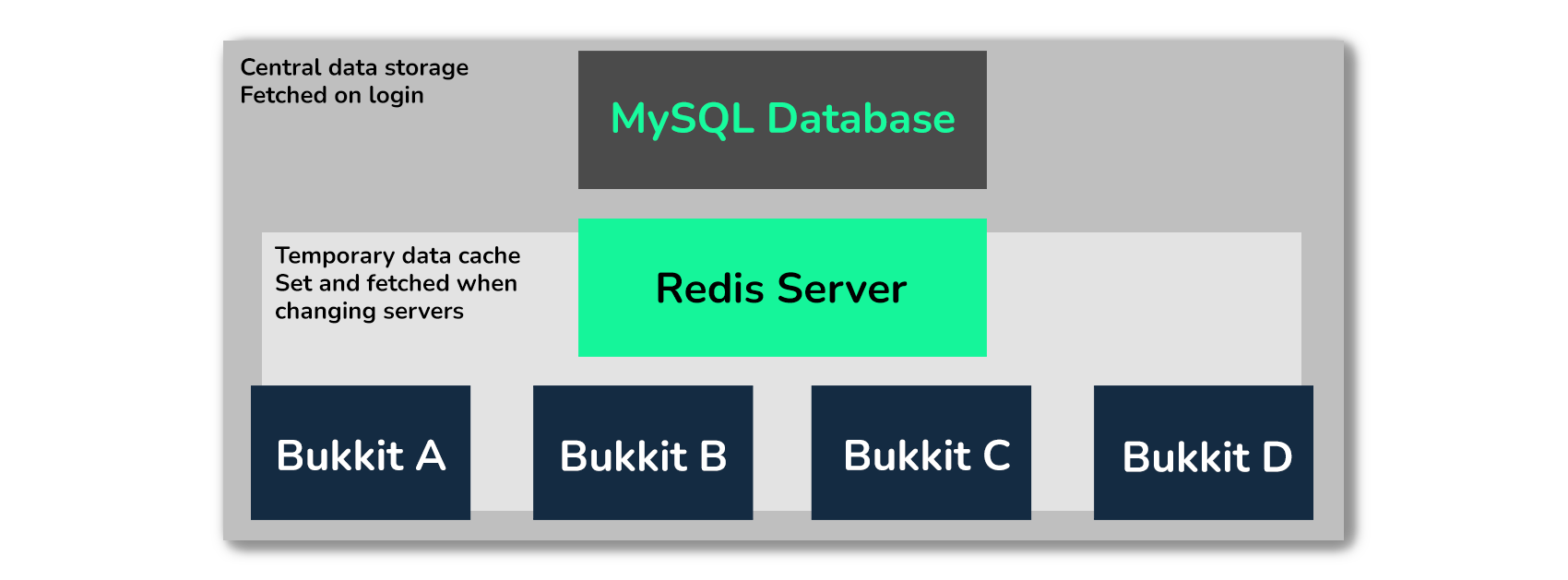forked from public-mirrors/HuskSync
You cannot select more than 25 topics
Topics must start with a letter or number, can include dashes ('-') and can be up to 35 characters long.
44 lines
3.4 KiB
Markdown
44 lines
3.4 KiB
Markdown
|
1 year ago
|
HuskSync offers two built-in **synchronization modes**. These sync modes change the way data is synced between servers. This page details the two sync modes available and how they work.
|
||
|
|
|
||
|
|
* The `DELAY` sync mode is the default sync mode, that use the `network_latency_miliseconds` value to apply a delay before listening to Redis data
|
||
|
|
* The `LOCKSTEP` sync mode uses a data checkout system to ensure that all servers are in sync regardless of network latency or tick rate fluctuations. This mode was introduced in HuskSync v3.1
|
||
|
|
|
||
|
|
You can change which sync mode you are using by editing the `sync_mode` setting under `synchronization` in `config.yml`.
|
||
|
|
|
||
|
|
> **Warning:** Please note that you must use the same sync mode on all servers (at least within a cluster).
|
||
|
|
|
||
|
|
<details>
|
||
|
|
<summary>Changing the sync mode (config.yml)</summary>
|
||
|
|
|
||
|
|
```yaml
|
||
|
|
synchronization:
|
||
|
|
# The mode of data synchronization to use (DELAY or LOCKSTEP). DELAY should be fine for most networks. Docs: https://william278.net/docs/husksync/sync-modes
|
||
|
|
mode: DELAY
|
||
|
|
```
|
||
|
|
</details>
|
||
|
|
|
||
|
|
## Delay
|
||
|
|

|
||
|
|
|
||
|
|
The `DELAY` sync mode works as described below:
|
||
|
|
* When a user disconnects from a server, a `SERVER_SWITCH` key is immediately set on Redis, followed by a `DATA_UPDATE` key which contains the user's packed and serialized Data Snapshot.
|
||
|
|
* When the user connects to a server, they are marked as locked (unable to break blocks, use containers, etc.)
|
||
|
|
* The server asynchronously waits for the `network_latency_miliseconds` value (default: 500ms) to allow the source server time to serialize & set their key.
|
||
|
|
* After waiting, the server checks for the `SERVER_SWITCH` key.
|
||
|
|
* If present, it will continuously attempt to read for a `DATA_UPDATE` key; when read, their data will be set from the snapshot deserialized from Redis.
|
||
|
|
* If not present, their data will be pulled from the database (as though they joined the network)
|
||
|
|
|
||
|
|
`DELAY` has been the default sync mode since HuskSync v2.0. In HuskSync v3.1, `LOCKSTEP` was introduced. Since the delay mode has been tested and deployed for the longest, it is still the default, though note this may change in the future.
|
||
|
|
|
||
|
|
However, if your network has a fluctuating tick rate or significant latency (especially if you have servers on different hardware/locations), you may wish to use `LOCKSTEP` instead for a more reliable sync system.
|
||
|
|
|
||
|
|
## Lockstep
|
||
|
|
The `LOCKSTEP` sync mode works as described below:
|
||
|
|
* When a user connects to a server, the server will continuously asynchronously check if a `DATA_CHECKOUT` key is present.
|
||
|
|
* If, or when, the key is not present, the plugin will set a new `DATA_CHECKOUT` key.
|
||
|
|
* After this, the plugin will check Redis for the presence of a `DATA_UPDATE` key.
|
||
|
|
* If a `DATA_UPDATE` key is present, the user's data will be set from the snapshot deserialized from Redis contained within that key.
|
||
|
|
* Otherwise, their data will be pulled from the database.
|
||
|
|
* When a user disconnects from a server, their data is serialized and set to Redis with a `DATA_UPDATE` key. After this key has been set, the user's current `DATA_CHECKOUT` key will be removed from Redis.
|
||
|
|
|
||
|
|
Additionally, note that `DATA_CHECKOUT` keys are set with the server ID of the server which "checked out" the data (taken from the `server.yml` config file). On both shutdown and startup, the plugin will clear all `DATA_CHECKOUT` keys for the current server ID (to prevent stale keys in the event of a server crash for instance)
|